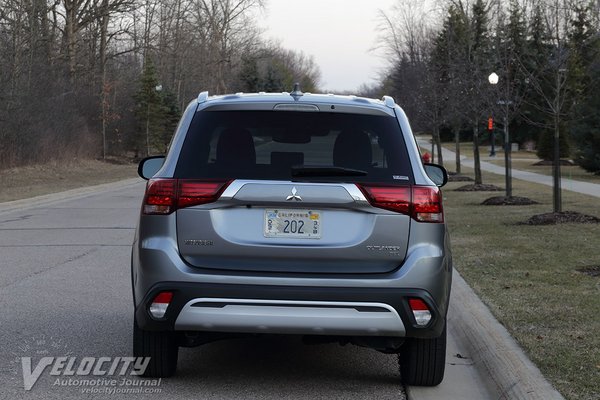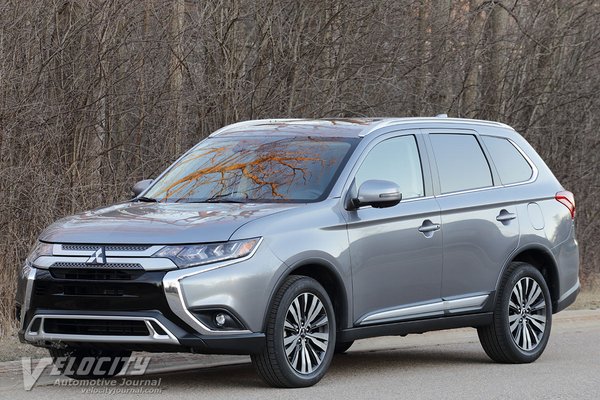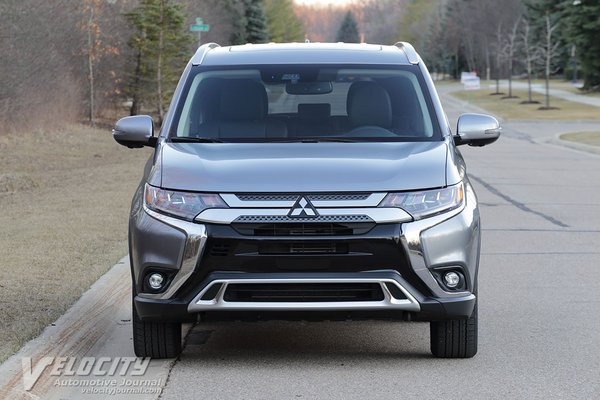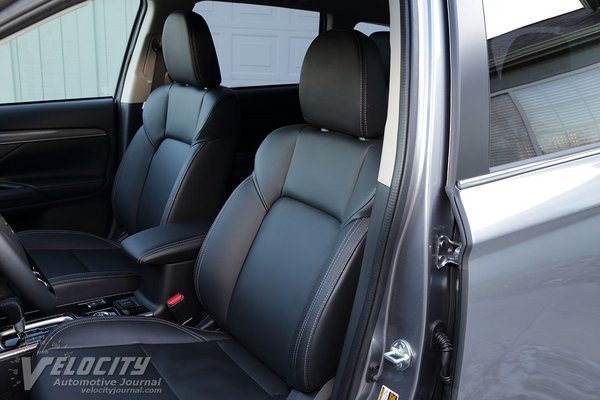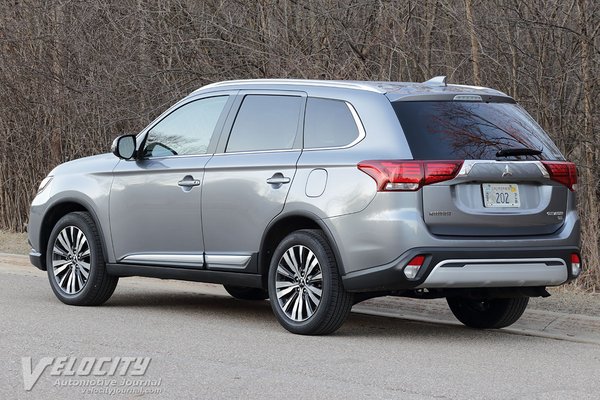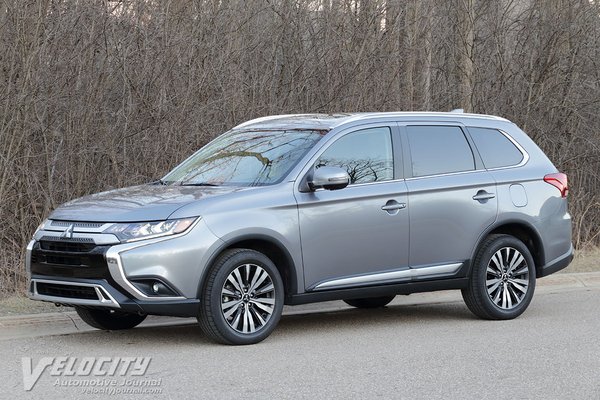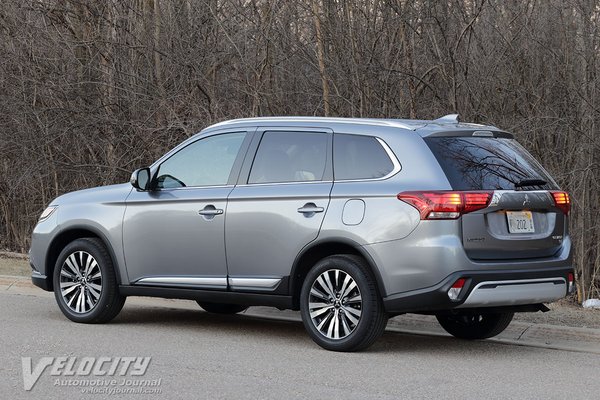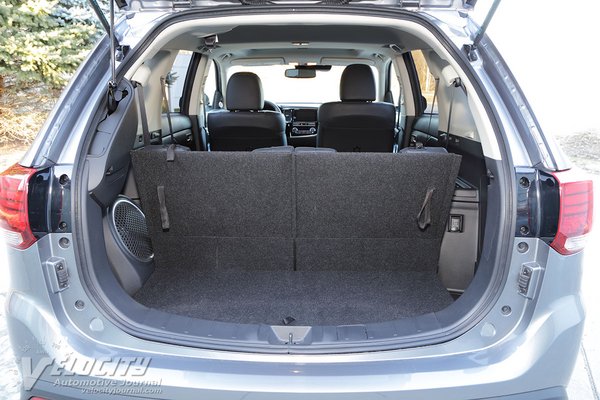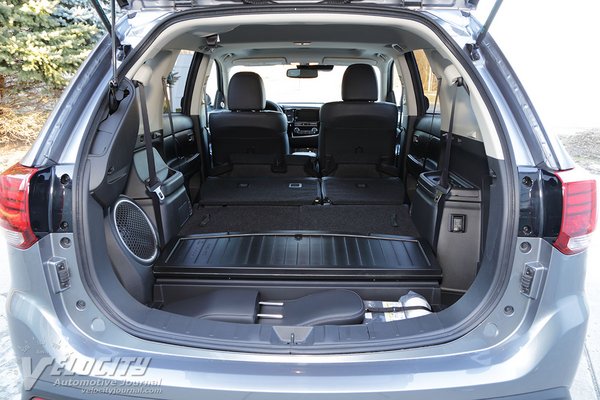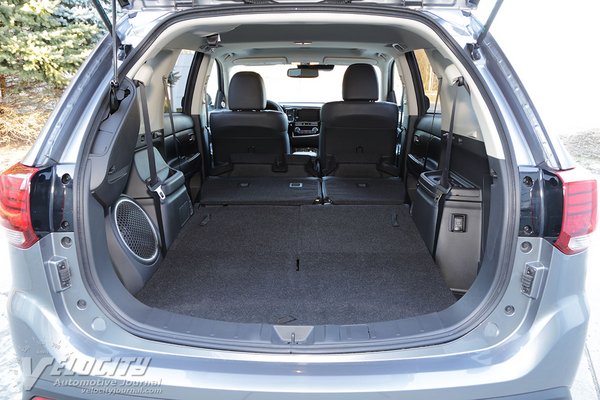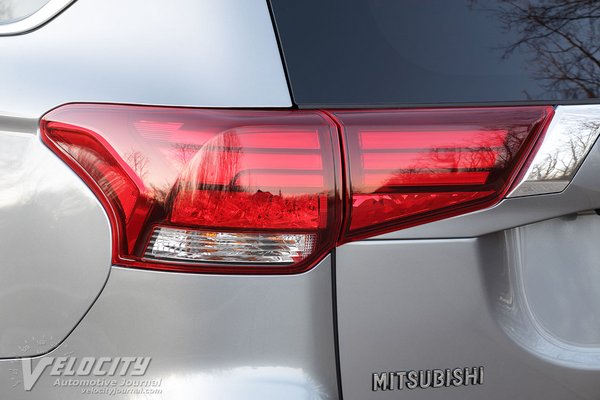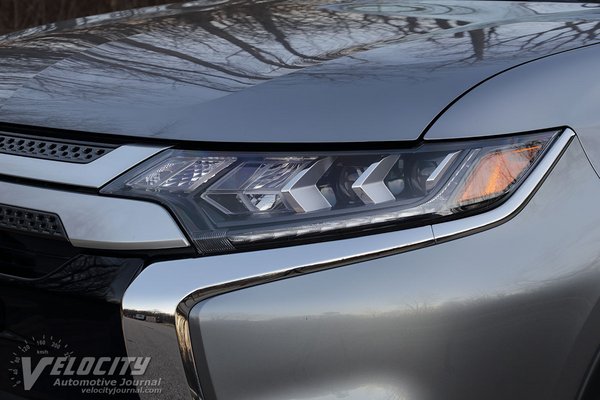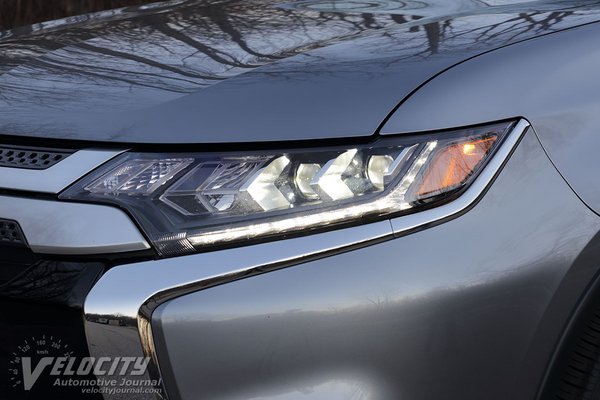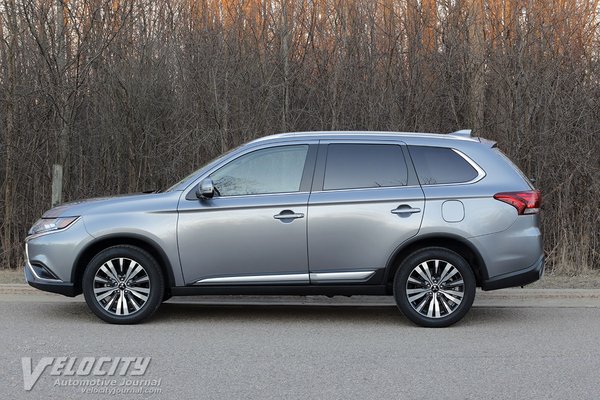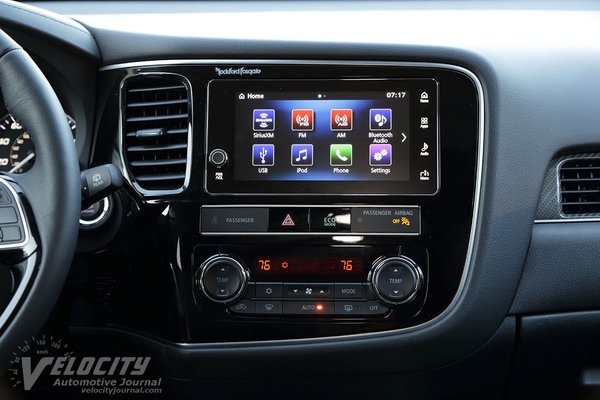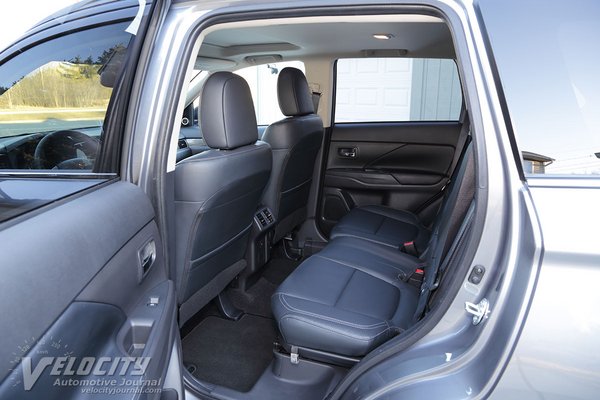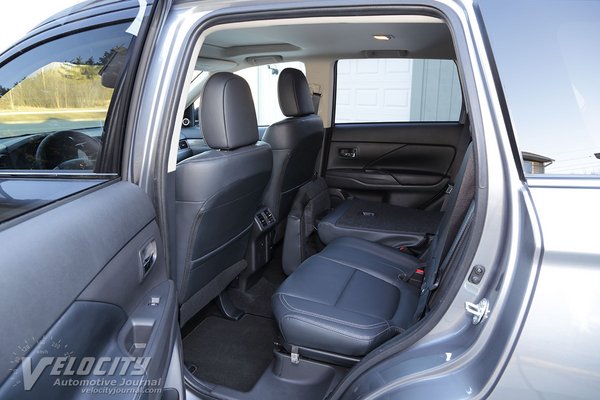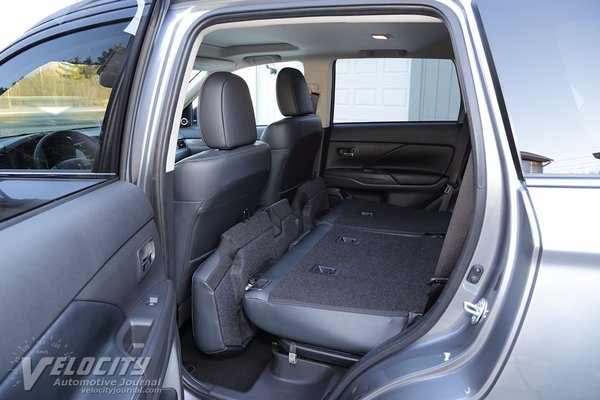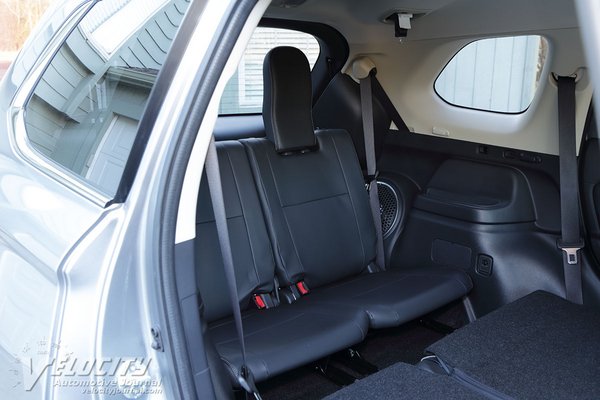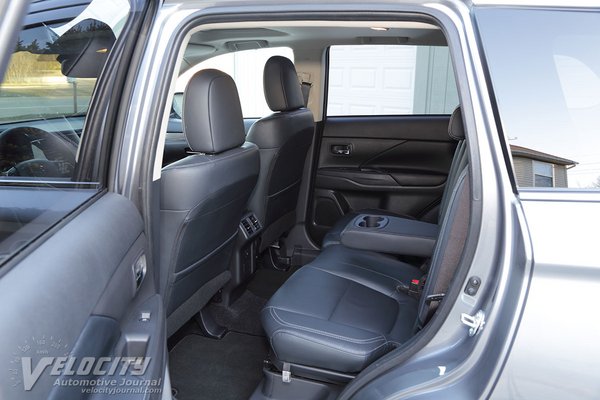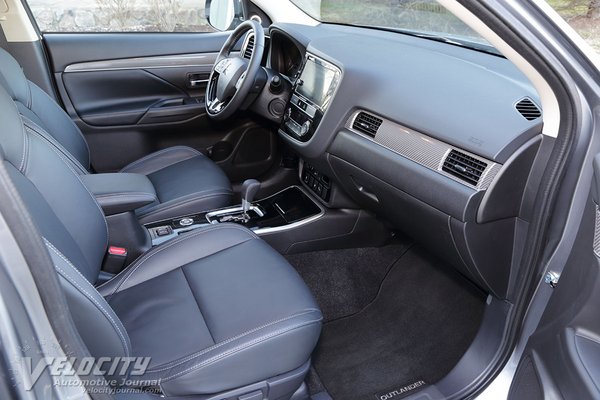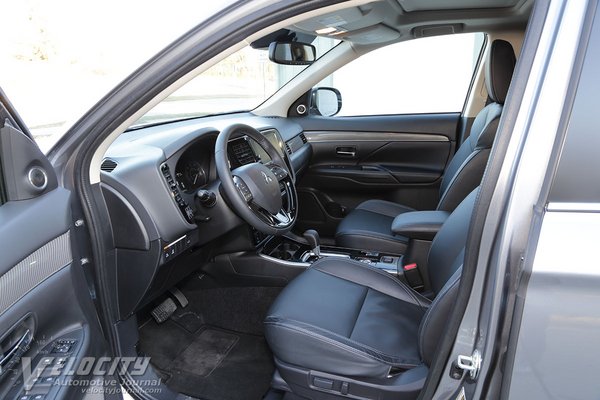2019 Mitsubishi Outlander SEL S-AWC
08/16/2019
Shahed Hussain
Mitsubishi has restructured its American lineup to nearly all SUVs, with the exception of the subcompact Mirage sedan and hatchback. SUV models consist of the compact Outlander Sport and new Eclipse Cross, slotted below the midsize Outlander. Outlander models starts with the base ES ($24,695), followed by the SE ($25,695), LE ($26,895), SEL ($27,095) and the top GT ($33,195).
Our test vehicle was an Outlander SEL S-AWC ($32,095) with the SEL Premium Package, equipped with the 2.4L four and all-wheel drive. Significant standard and optional equipment include leather seats (heated in front), heated steering wheel, sunroof, rearview camera, Apple CarPlay and Android Auto compatibility, 9-speaker Rockford-Fosgate audio system, power liftgate, LED headlights and foglights.
Only the top Outlander GT gets a 224-hp 3.0L V-6 with all-wheel drive (S-AWC). All other Outlanders have the 2.4L inline-4 in either front-drive or all-wheel drive configuration. The all-aluminum SOHC four is rated for 166 hp @ 6,000 RPM and 162 lb.-ft @ 4,200 RPM. Mated to the 2.4L is a Continuously Variable Transmission (CVT) driving all four wheels. The V-6 is coupled to a 6-speed automatic. All-wheel drive models are equipped with a locking center differential, endowing the Outlander with superior traction on slippery surfaces. Fuel consumption is rated at 24/29 MPG (city/hwy.) for AWD models powered by the 2.4L engine.
The Outlander's suspension consists of front MacPherson struts and stabilizer bar; at the rear is a multi-link layout with coil springs, dampers, and a stabilizer bar. Steering is electrically assisted with 2.9 turns lock-to-lock. Brakes are all-disc with 11.6-in. diameter front rotors and 11.9-in. diameter rear rotors. All Outlanders roll on 18-in. diameter alloy wheels shod with 225/55R18 Toyo A24 M+S tires. Curb weight is 3,472 lbs. for the all-wheel drive SEL.
Mitsubishi's interior design offers no surprises. Dark gray panels and dashboard are offset with glossy black trim on the steering wheel, instrument panel surround and center console. Simulated carbon-fiber trim on the doors and dash is unusual in this class. The gauge cluster consists of an analog tachometer and speedometer with a digital multi-function display in the center. Integrated within the steering wheel spokes are buttons for audio, phone and cruise control. A 7-in. touchscreen infotainment display is mounted within the dash on the center stack. Dual climate controls for the driver and front passenger are conveniently situated below the touchscreen. A 12V outlet and USB port can be used to charge mobile devices.
The Outlander's front seats are comfortable, but don't offer much lateral support. Both driver and front passenger seats get 8-way power adjustability. Front headroom is adequate for occupants up to 6 ft. tall. Second-row seats slide and recline for greater comfort, but the center seating position offers minimal seat padding. The third-row seats flip out from the floor to accommodate two occupants, although legroom is limited. Both second and third row seats fold flat for cargo.
Since the Outlander was powered by the standard inline-4, we didn't have high performance expectations. The 2.4L provides adequate acceleration when the Outlander is lightly loaded, but requires heavy throttle input. We would highly recommend opting for the V-6 GT if hauling passengers and cargo are a priority. To command all 166-hp from the engine, we always set the CVT to the Sport (Ds) mode. As expected, the CVT is unpleasantly noisy between 35 to 45 MPH. Some modern CVTs are programmed to vary engine RPM to avoid body structure resonances, but this is not the case with the Outlander. At highway cruising speeds the Outlander is relatively quiet with minimal engine, road and wind noise intrusion.
Mitsubishi's chassis engineers tuned the Outlander for ride comfort as a high priority. As a result, the suspension feels underdamped and floats over bumpy roads. Soft spring rates result in moderate body roll combined with significant understeer around tight curves. We also noticed significant acceleration squat and dive under braking. The brakes were unimpressive, which provide subjectively adequate stopping power from highway speeds. The electrically-assisted steering is tuned for moderate effort and communicates road surface textures effectively. The Outlander doesn't encourage the driver to approach its unimpressive handling limits on the road, which isn't really a concern for the intended customer.
The Outlander is an unexceptional midsize SUV in a segment overflowing with superior competition from other Asian and American manufacturers. Although we cannot recommend the Outlander when powered by the 2.4L, potential customers should evaluate the V-6 GT if the Outlander is on their shopping list.

